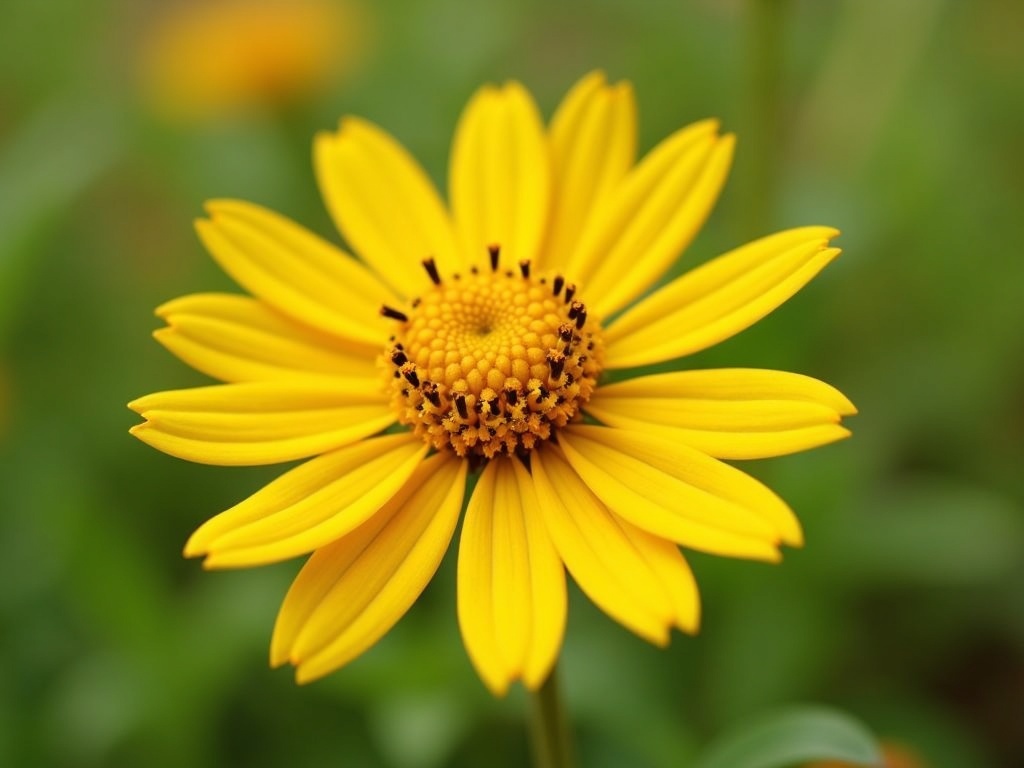Arnica for Bruised Joints and Soreness: A Natural Remedy Guide
That throbbing ache in your knee after a tough hike, the dull throb in your wrist after a day of typing, the unsightly purple bloom spreading across your shin after bumping into the coffee table… We've all been there. Bruised joints and general muscle soreness are unpleasant realities of an active life. While reaching for over-the-counter painkillers is common, many are exploring natural alternatives. Enter arnica, a mountain daisy with a history of medicinal use, particularly for pain relief. But does arnica really work for bruised joints and soreness? And if so, how should you use it? This guide delves into the science and practice of using arnica to soothe your aches and pains.
What is Arnica?
Arnica, scientifically known as Arnica montana, is a flowering plant belonging to the daisy family (Asteraceae). Native to the mountainous regions of Europe and Siberia, it has been used for centuries in traditional medicine. Also known as mountain tobacco or leopard's bane, arnica boasts bright yellow-orange flowers and a rich history of use as a remedy for bruises, sprains, muscle aches, and inflammation. The active compounds in arnica, primarily sesquiterpene lactones, are believed to be responsible for its therapeutic effects. These compounds have demonstrated anti-inflammatory and analgesic (pain-relieving) properties in laboratory studies.
How Arnica Works: The Science Behind the Soothe
While the exact mechanisms of arnica are still being researched, its potential benefits are linked to several key actions:
- Anti-inflammatory Action: Sesquiterpene lactones, especially helenalin, inhibit the production of inflammatory compounds in the body. This helps reduce swelling and pain associated with injuries.
- Increased Circulation: Arnica may improve blood flow to the affected area. Enhanced circulation can accelerate healing by delivering more oxygen and nutrients to damaged tissues and removing waste products.
- Pain Relief: Arnica may have a direct analgesic effect, reducing the perception of pain signals. Some studies suggest it interacts with pain receptors in the nervous system.
It's important to note that much of the scientific evidence supporting arnica's effectiveness comes from laboratory studies and small clinical trials. More extensive research is needed to fully understand its effects and optimal uses.
Arnica for Bruises: Fading the Black and Blue
Bruises occur when small blood vessels under the skin rupture, causing blood to leak into surrounding tissues. The characteristic discoloration of a bruise is due to the breakdown of hemoglobin in the blood. Arnica is widely used to reduce the appearance and pain associated with bruises. Its anti-inflammatory properties can minimize swelling, while its potential to improve circulation may help clear away pooled blood more quickly.
Arnica for Sore Joints: Easing Aches and Pains
Joint soreness can arise from various causes, including injuries, overuse, and inflammatory conditions like arthritis. Arnica's anti-inflammatory and analgesic effects may help alleviate joint pain and stiffness. It's often used for:
- Muscle Soreness After Exercise: Applying arnica after a workout can help reduce delayed-onset muscle soreness (DOMS).
- Osteoarthritis: Some individuals with osteoarthritis find arnica helpful in managing joint pain, although it's not a substitute for conventional medical treatment.
- Sprains and Strains: Arnica can be applied to sprained or strained joints to reduce pain and swelling.
How to Use Arnica: Forms and Applications
Arnica is available in various forms, including:
- Topical Creams and Gels: These are the most common forms for treating bruises and soreness. Apply a thin layer to the affected area, gently massaging it into the skin. Repeat several times a day.
- Ointments: Similar to creams and gels, ointments are typically thicker and provide a protective barrier on the skin.
- Oral Pellets (Homeopathic): These are highly diluted forms of arnica and are used in homeopathic medicine. The effectiveness of homeopathic arnica is a subject of debate.
- Arnica Oil: Can be used for massage, diluted with a carrier oil such as almond or jojoba oil.
Important Considerations:
- For external use only: Never ingest topical arnica products.
- Avoid broken skin: Do not apply arnica to open wounds, cuts, or irritated skin.
- Allergic reactions: Some individuals may be allergic to arnica. Perform a patch test on a small area of skin before widespread use.
- Consult a healthcare professional: If you have any underlying medical conditions or are taking medications, talk to your doctor before using arnica.
Choosing the Right Arnica Product
With so many arnica products on the market, selecting the right one can feel overwhelming. Here are some tips:
- Read the label carefully: Check the concentration of arnica extract in the product. A higher concentration may be more effective.
- Consider the other ingredients: Look for products with natural and soothing ingredients. Avoid those with harsh chemicals or artificial fragrances.
- Choose a reputable brand: Opt for arnica products from well-known and trusted manufacturers.
- Read reviews: See what other users have to say about the product's effectiveness and any potential side effects.
Specific Considerations for Joint Pain
When using arnica for joint pain, consider these factors:
- Massage: Gently massaging the arnica cream or gel into the affected joint can help improve circulation and promote absorption.
- Heat or Cold: You can combine arnica with heat or cold therapy for enhanced pain relief. Apply a warm compress after arnica application for muscle relaxation, or use a cold pack for acute inflammation and swelling.
- Long-Term Use: If you experience chronic joint pain, consult with a healthcare professional to determine the underlying cause and discuss appropriate treatment options. Arnica may provide temporary relief but is not a cure for underlying conditions like arthritis.
Potential Side Effects and Precautions
While arnica is generally considered safe for topical use, some individuals may experience side effects, including:
- Skin irritation: Redness, itching, or burning at the application site.
- Allergic reactions: Rash, hives, or difficulty breathing (rare).
Who Should Avoid Arnica?
- Pregnant or breastfeeding women: There is limited information on the safety of arnica during pregnancy and breastfeeding.
- Individuals with allergies to plants in the Asteraceae family: This includes ragweed, marigolds, and chrysanthemums.
- People taking blood thinners: Arnica may increase the risk of bleeding.
Arnica vs. Other Pain Relief Options
Arnica is just one of many options for managing bruises, soreness, and joint pain. Other alternatives include:
- Over-the-counter pain relievers: Medications like ibuprofen (Advil, Motrin) and acetaminophen (Tylenol) can provide effective pain relief.
- Topical pain relievers: Creams and gels containing ingredients like menthol, capsaicin, or lidocaine can also alleviate pain.
- RICE (Rest, Ice, Compression, Elevation): This simple self-care method is effective for acute injuries.
- Physical therapy: A physical therapist can help you develop exercises and stretches to improve joint function and reduce pain.
- Prescription medications: Your doctor may prescribe stronger pain relievers or anti-inflammatory drugs for chronic or severe pain.
The Bottom Line: Is Arnica Right for You?
Arnica can be a valuable natural remedy for bruised joints and soreness. Its anti-inflammatory and pain-relieving properties may help reduce swelling, ease pain, and promote healing. However, it's essential to use arnica safely and responsibly. Choose high-quality products, follow the instructions carefully, and be aware of potential side effects. If you have any concerns, consult with a healthcare professional before using arnica. While not a miracle cure, arnica offers a natural alternative for managing everyday aches and pains, helping you get back to feeling your best.


